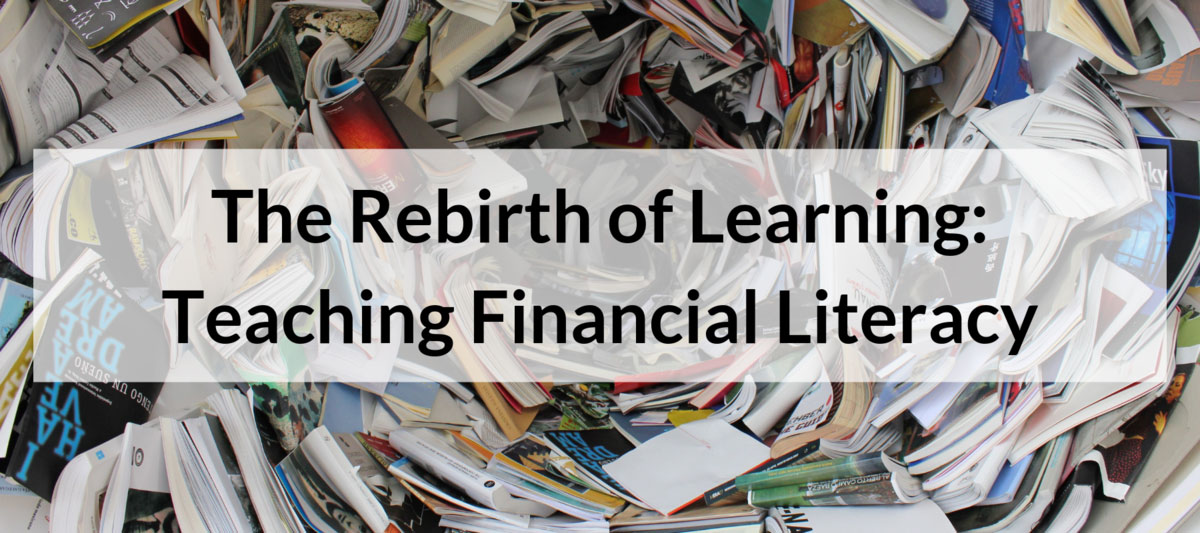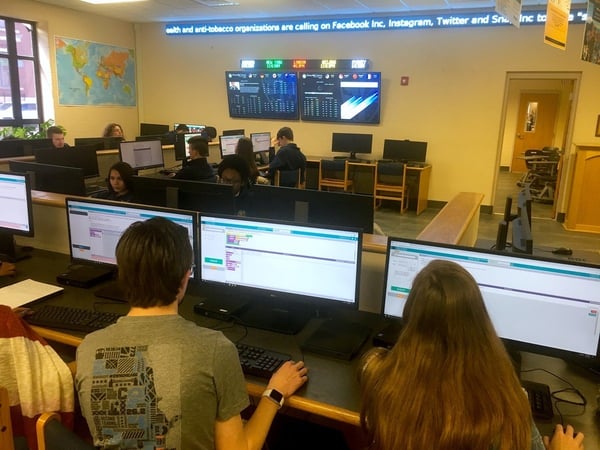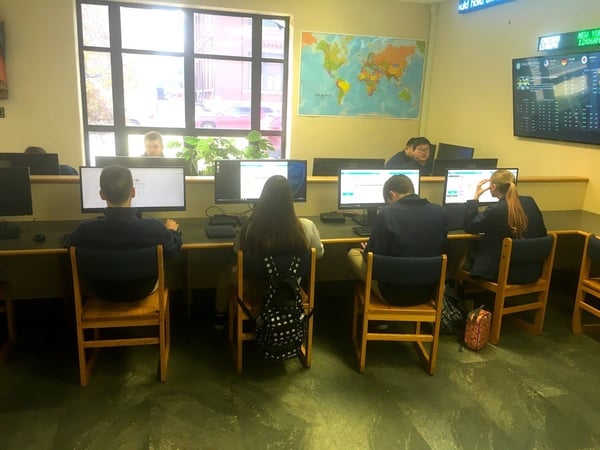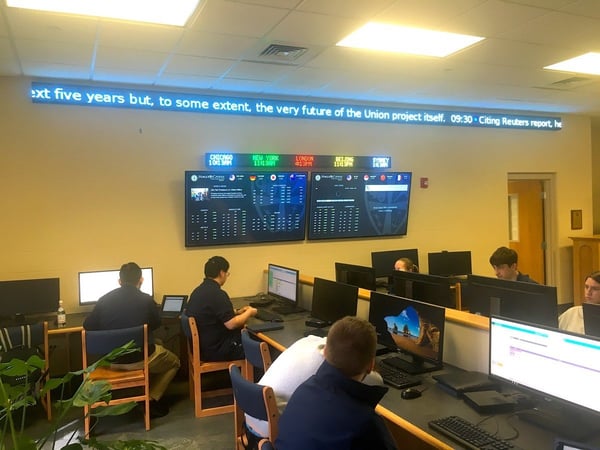
James White, M.Ed, President of Marquette Catholic High School, did the unthinkable in some eyes: he got rid of his school’s library! Before you wag your finger in shame, consider this: 100% of Marquette’s students are accepted into college. Eliminating the library at a school may sound like blasphemy, but for Marquette Catholic High School it turned their school into a state of the art learning institution.
 |
|||
|
|||
|
“Our global business lab has enabled us to engage our students in Hands-on learning that will change their understanding of finance forever.” |
|||
 |
Continue reading to see how Marquette Catholic High School:
|
Old Becomes New
Marquette Catholic High School has been a vital part of Michigan City, Indiana for over 120 years.
It began in 1886 with just eighty students who were taught by six nuns. Even though it now has several hundred enrolled from sixteen countries, it maintains small class sizes.
As enrollment grew, one of the school’s core missions was the same: “Young people become more here.”
When White came to Marquette over ten years ago, he was faced with the same challenge as nearly every school across the nation: how can you use technology to ensure student success?
Six years later, White stood in Marquette’s dusty, unused library and came to a bold conclusion: the unused library space could become the centerpiece of the school once more if the school accepted that students are learning differently.
White didn’t want to destroy the library; he wanted to revitalize it by moving the collection into a virtual space and using the physical space for an immersive learning environment that cultivated “faith and character development along with intellectual growth.”
Start With What You Have
White began to think out of the book--literally. His vision for the library was to install a finance lab where students could learn about business careers in a hands-on environment. Through referrals and online searching, White was introduced to Rise Vision.
The initial cost for Marquette was several thousand dollars, but White encourages educators to start with what they have and grow from there. Some schools have turned computer labs into finance labs at a fraction of the cost. You can read about how one enthusiastic business teacher bootstrapped his finance lab into an award-winning space.
Marquette saved thousands of dollars by repurposing old library space. They added new flooring and LED lighting, then took the old computer lab area of the library and used it as the platform for thirty trading computers. The entire renovation of the space took only a few weeks and it looked brand new when they were finished.
To cover the regular ongoing cost of licensing and other fees, White approached local banks and businesses and was able to acquire sponsorships. The school funded the initial investment, but donations cover all future fees.
If your school is looking for ways to raise funding for your digital signage, check out our tips here and here. We have also compiled a list of grants available to fund technology improvements.
The finished lab consists of a fitted wall-to-wall LED ticker on the ceiling displaying the NASDAQ 100 with a smaller ticker beneath it showing major markets around the world. Two 60-inch TV screens display live quotes for currencies and commodities, live market news, and a stock watchlist. The school also has a ticker in the cafeteria where students can track their portfolios while on break.

Learning for students at Marquette exists largely in virtual spaces where walls do not bind them and there are infinite possibilities. Teachers don’t teach from books. Every student enrolled gets an iPad that they take to each of their classes.
Marquette has about eight business classes per semester in the finance lab where they utilize their own Marquette-branded Stock Market Simulation and Curriculum site. The lab is used for both economics and global trading courses.
75% of students are taught at a college level, and about 70% of the students who take the courses go into the field. Through a career path, students also have the option to earn an associates degree before they graduate.
Even though White got some pushback when he first introduced the idea of replacing the library with a finance lab, the results speak for themselves.
Because Marquette is near Chicago, they can bring real-life experts into the classroom regularly. Once a week, students either take a field trip to a business or trading floor or have someone from the field come in and lecture.
The Future Is Bright!
Marquette Catholic High School’s finance lab has been successfully running for over four years. It is one of the hallmarks of the school that visually shows the school is invested in the future of their students.
The finance lab was one of the first of its kind and since opening, it has helped the school recruit the best and brightest faculty in the country--educators who are extremely passionate about teaching and want to work at a school dedicated to helping their students succeed. White hopes to have an additional teacher for the lab soon so that they can utilize it even more.

If you are interested in learning more about how to start a finance lab at your school, we have a post here that will walk you through getting started on a budget.
If your school has a finance lab, we’d love to hear what you are doing so we can share it with other schools--tell us about it here.
5 Ways to Modernize Your Campus on a BudgetBudgets are tight at nearly every school. Repurposing old space is one way to save money on finance labs. Here are 5 more tips for modernizing your campus and upgrading technology on a budget:
|






